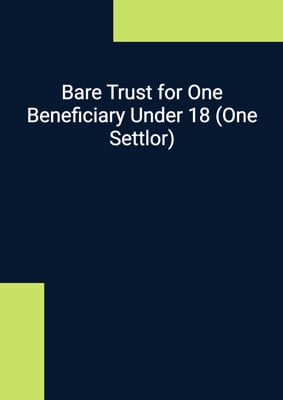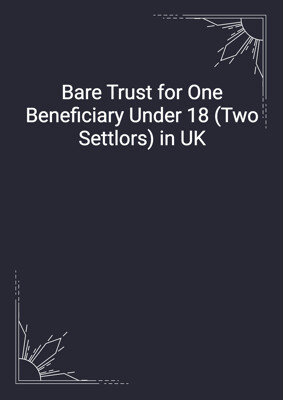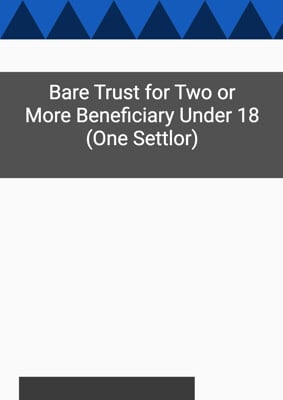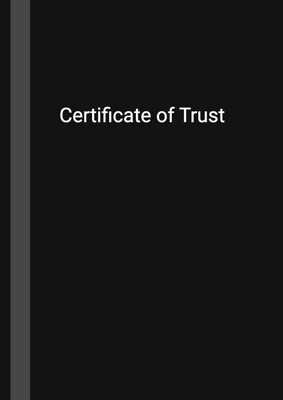How to Tailor the Document for Your Need?
01
Create Document
Click "Create Document" button and the document will be prepared with your account details automatically filled in.
02
Fill Information
Please fill in any additional information by following the step-by-step guide on the left hand side of the preview document and click the "Next" button.
03
Get Document
When you are done, click the "Get Document" button and you can download the document in Word or PDF format.
04
Review Document
Please review the document carefully and make any final modifications to ensure that the details are correct before publication / distribution.
Document Preview
Document Description
The Declaration of Trust is a legal document that establishes a bare trust of a property. It is entered into between two parties: the trustee, who is the freeholder of the property, and the beneficiary. The trustee wishes to declare a bare trust of the property in favor of the beneficiary.
The document begins with an interpretation section, which provides definitions for terms used throughout the deed. It clarifies that the property refers to the freehold property at a specific location. The clause headings are stated to have no impact on the interpretation of the deed. It also establishes that references to clauses are specific to this deed and that gender references apply to both genders. Additionally, it states that singular and plural forms are interchangeable.
The declaration of trust is made in Section 2, where the trustee irrevocably declares that the property is held absolutely by the trustee on trust, on behalf of the beneficiary. This section establishes the legal basis for the trust relationship.
Section 3 imposes restrictions on the trustee's dealings with the property. Without the prior written consent of the beneficiary, the trustee is prohibited from selling, assigning, transferring, or disposing of any part of the property. The trustee is also restricted from creating any encumbrances or granting interests in the property to third parties, except for the beneficiary.
Section 4 addresses the registration of the trust. The trustee agrees to submit applications to the HM Registry to place restrictions on the title of the property. These restrictions prevent any disposition of the registered estate without the written consent of the trustee. Once the registration is completed, the trustee is obligated to send the official copies of the title to the beneficiary within one month.
The document concludes with an execution section, stating that the deed has been duly delivered and executed as a deed and is effective from the date stated at the beginning of the document.
Overall, the Declaration of Trust is a legally binding document that establishes a bare trust of a property, with the trustee holding the property on behalf of the beneficiary. It imposes restrictions on the trustee's dealings with the property and requires registration with the HM Registry to protect the interests of the beneficiary.
How to use this document?
To use the Declaration of Trust document effectively, follow these steps:
1. Understand the purpose: Familiarize yourself with the purpose of the document, which is to establish a bare trust of a property. This trust relationship involves the trustee holding the property on behalf of the beneficiary.
2. Identify the parties: Clearly identify the parties involved in the trust by entering their names and principal places of business in the agreement. This ensures that both parties are clearly identified and their roles are established.
3. Define the property: Specify the freehold property that is subject to the trust. Provide a clear description of the property to avoid any confusion.
4. Declare the trust: Use the provided language to irrevocably declare the trust. This establishes the legal basis for the trust relationship and the trustee's obligation to hold the property on behalf of the beneficiary.
5. Impose restrictions: Ensure that the trustee is aware of the restrictions on their dealings with the property. They should not sell, assign, transfer, or dispose of any part of the property without the prior written consent of the beneficiary. Additionally, they should not create any encumbrances or grant interests in the property to third parties, except for the beneficiary.
6. Register the trust: Follow the necessary steps to register the trust with the HM Registry. This involves submitting applications to place restrictions on the title of the property. Once the registration is completed, the trustee must send the official copies of the title to the beneficiary within one month.
7. Execute the deed: Ensure that the document is executed as a deed, following the required legal formalities. This includes signing and dating the document.
By following these steps, you can effectively use the Declaration of Trust document to establish a bare trust of a property and protect the interests of both the trustee and the beneficiary.
Not the right document?
Don’t worry, we have thousands of documents for you to choose from:













